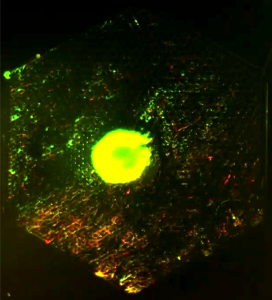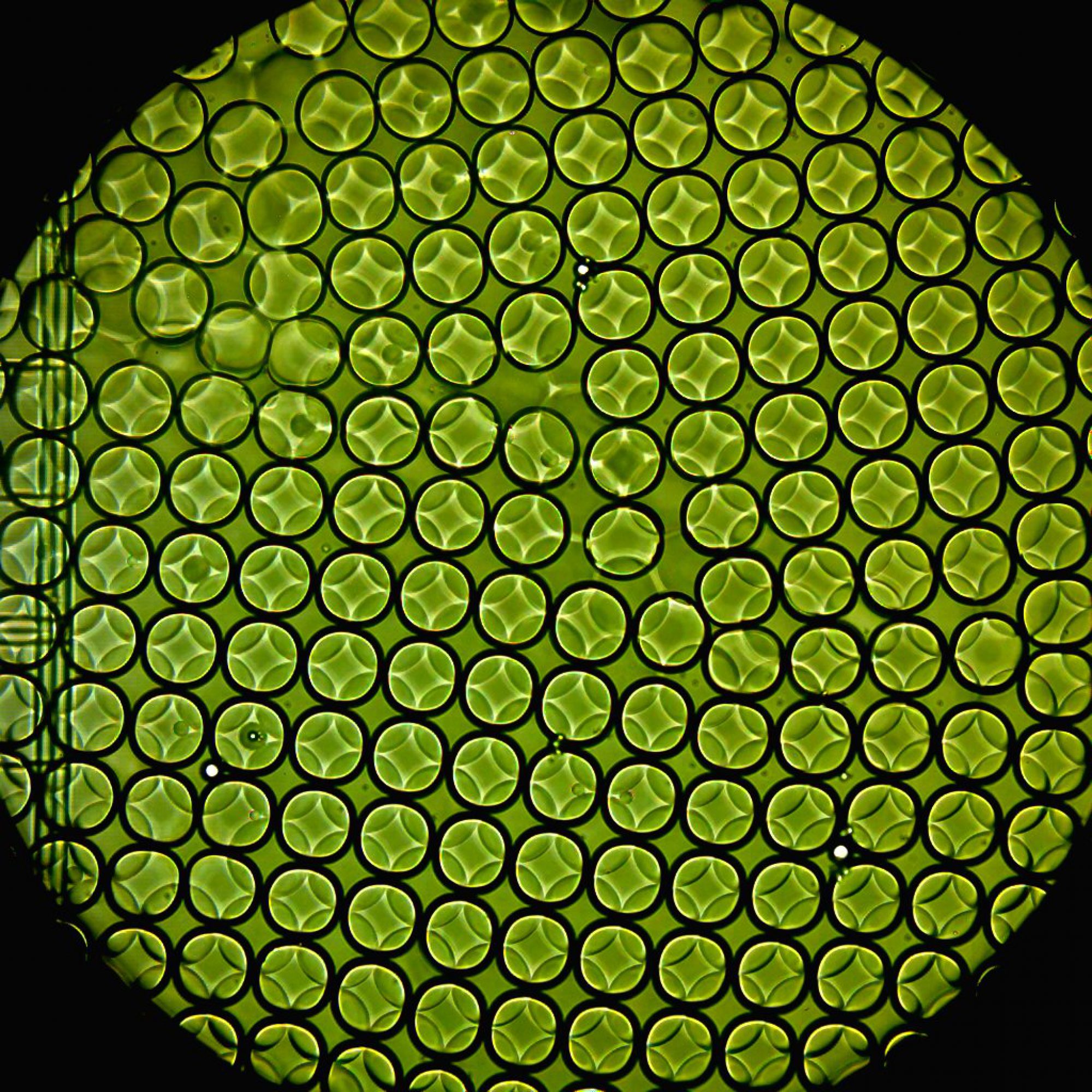

Shown to the left are two versions of CAD of such devices. The fluid flow areas are indicated in blue. Two fluids, one the chemical or interest and the other a neutral buffer like PBS or growth media are flown into the device from the top left corner using syringe pumps. The fluids mix on the device across their interface creating the gradient of interest, and are then flushed out through two channels on the bottom right corner of the device. To the left is a simple planar device, like used in the image above. The design to the right comes with recessed wells shown in green where one may grow non-adherent cells by protecting them from getting flushed out by the driving fluids.

To the left is an image of GFP-labeled E. coli that expresses a red fluorescent reporter when stimulated by nitric oxide flowing on the lower right half of the device. The designs were inspired by the work of Q. Zhang, et al., Acceleration of Emergence of Bacterial Antibiotic Resistance in Connected Microenvironments, Science 2011:333, 6050, 1764-1767.
